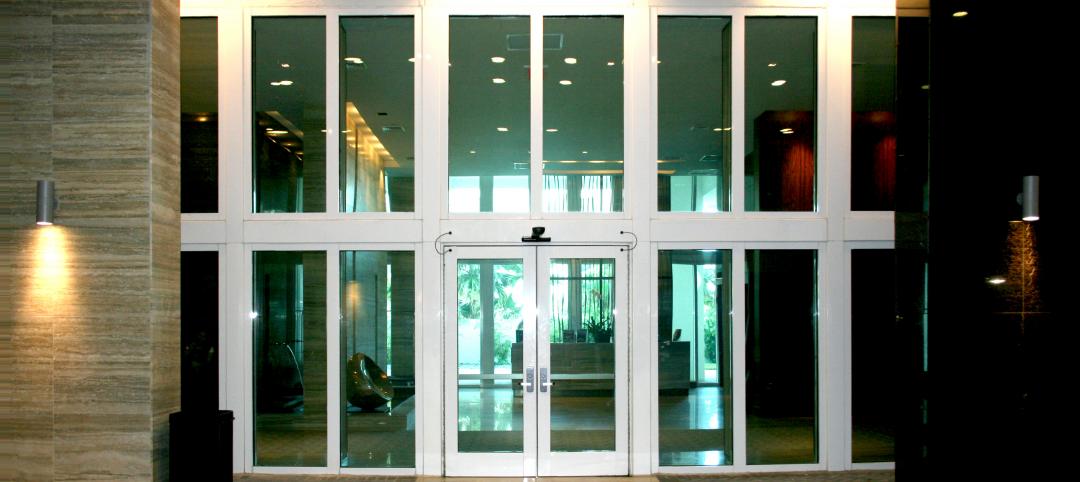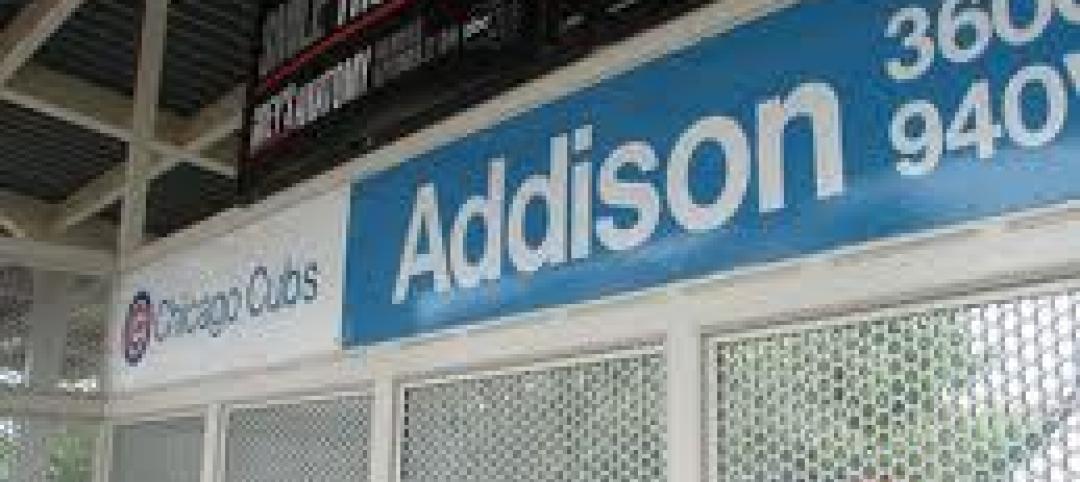Solutions to increase the supply of affordable rental housing are explored in a new report from the Urban Land Institute’s (ULI) Terwilliger Center for Housing and Enterprise Community Partners, Inc (Enterprise).
Bending the Cost Curve: Solutions to Expand the Supply of Affordable Rentals outlines factors that impede the development of affordable rental housing – causing the supply in many markets to fall far short of the demand – and offers specific, actionable solutions to overcome the barriers.
Nationally, there were only 6.9 million rentals affordable to 11.8 million extremely low-income renters in 2011, a supply gap that grew by three million renters between 2001 and 2011—and continues to grow. "In an era of growing demand and declining government financial support for affordable rental housing, it is more important than ever to deliver affordable housing as effectively as possible,” the report says. “Bending the cost curve will enable developers to deliver additional affordable rental homes and help jurisdictions provide more housing choices, meet the growing need for affordable rentals, and ensure that individuals and families across a range of incomes have a place to call home within the community.”
The report, released today in Washington, D.C. at the ULI/Carolyn and Preston Butcher Forum on Multifamily Housing, is based on a series of interviews and roundtable discussions co-hosted by the Terwilliger Center and Enterprise over the past 16 months with nearly 200 developers, financiers, and policy makers in ten markets – Chicago, Denver, Los Angeles, New York City, San Francisco, Boston, Houston, Minneapolis, Pittsburgh, and Seattle.
Conclusions drawn from the discussions formed the basis for the research, which is intended to help fill the void of material examining how to overcome regulatory barriers to affordable rental development, such as land use, zoning and building code restrictions, processing delays, and financing obstacles. While economic conditions and demographics vary widely among different markets and play a significant role in local affordable housing development, the report identifies several overarching cost drivers, including:
- Project scale–Fixed costs such as land, legal expenses, and funding application fees, are not correlated to the number of units and often make smaller projects less economical on a per unit basis.
- Project design and construction – Community concerns, site selection, the price of construction labor, and state and local regulations affect the ability to produce high quality units at an affordable cost.
- Financing and underwriting – Because affordable rentals produce a lower level of profit, developers face several financing obstacles, such as difficulty attracting investors who are strictly yield driven; complicated deals requiring multiple layers of funding; and limited or no availability of financing for smaller projects and for mixed income projects.
- Complex deal structures – Project fees, timing of tax credit use, higher risk, greater due diligence, longer timelines, and the need to set aside capital reserves all drive up costs.
“Drivers of cost come at all points in the development process and are deeply intertwined, but the need for more affordable rentals compels us to take on the challenge of understanding the drivers and work to mitigate them,” said Lynn Ross, executive director of the Terwilliger Center.
“Enterprise and ULI will use the joint research to spark federal, state and local conversations that lead to policy change and financial innovation, ultimately stretching limited resources for affordable housing,” said Ali Solis, senior vice president of public policy and external affairs at Enterprise. “At the same time, we must maintain high quality, green standards so that affordable homes can be sustainable for the long haul. That is our challenge as an industry.”
To address the cost drivers, the report offers several recommendations:
- Promote cost-effectiveness through consolidation, coordination, and simplification.This includes consolidating monitoring and due diligence activities; coordinating competitive funding competitions; improving codes, zoning and regulation; and streamlining HUD financing.
- Remove barriers to reducing construction costs and delays. This includes implementing smart parking requirements; reviewing unit size and amenity requirements; reforming codes and other rules that make rehabilitation difficult; finding ways to better coordinate development teams; and supporting innovative building techniques like micro-units and prefabricated housing.
- Facilitate a more efficient deal assembly and development timeline. This includes eliminating zoning barriers to by-right housing development; creating clarity and structure in the public engagement process; adopting state and local policies to streamline local development; promoting consistency in state Qualified Allocation Plans (QAPs); and adopting efficient deadlines for deal assembly and project development.
- Improve and align incentives. This includes evaluating life-cycle cost considerations in the underwriting process; creating incentives for green building and energy-efficient design; incorporating cost considerations in the QAP process; assessing the time frame in which costs are evaluated for the purpose of underwriting; providing local incentives for affordable housing development (such as land acquisition subsidies, property tax abatements, fee waivers and expedited permitting); and removing perverse incentives that can increase costs (potentially by adopting alternate compensation models or flexible tax credit allocations).
- Improve the flexibility of existing sources of financing and create new financial products to better meet needs. This includes exploring entity-level financial products; facilitating the acquisition of existing multifamily properties through direct subsidies, public-private partnerships or regulatory flexibility; facilitating more efficient use of project reserves; and providing greater flexibility in 4-percent Low-Income Housing Tax Credit allocations (such as alternate sources of debt financing, private placement of bonds or direct bond purchases).
- Support the development and dissemination of information and best practices. This includes creating a cost competition to support innovative practice; determining appropriate units of measurement and comparison to guide decision making (such as costs-per-unit or costs-per-person); building a community of practice; and creating a forum for sharing data and best practices.
In addition to the recommendations, the report identifies three lessons drawn from the research – 1) Cost drivers come at all points in the development process and are deeply intertwined; 2) Mitigating the cost drivers requires collaboration efforts involving multiple stakeholders from the private and public sector; and 3) Leadership is essential to implement the recommendations.
About the Urban Land Institute
The Urban Land Institute www.uli.org is a nonprofit education and research institute supported by its members. Its mission is to provide leadership in the responsible use of land and in creating and sustaining thriving communities worldwide. Established in 1936, the institute has more than 30,000 members worldwide representing all aspects of land use and development disciplines.
About the ULI Terwilliger Center for Housing
The ULI Terwilliger Center for Housing engages in a multifaceted program of work that furthers the development of mixed-income, mixed-use communities with a full spectrum of housing affordability. The center was established in 2007 by J. Ronald Terwilliger, former ULI chairman and chairman emeritus of Trammell Crow Residential.
About Enterprise Community Partners
Enterprise Community Partners works with partners nationwide to build opportunity. Enterprise creates and advocates for affordable homes in thriving communities linked to jobs, good schools, health care services, and transportation. Enterprise lends funds, finance development, and manage and build affordable housing while shaping new strategies, solutions, and policy. Over more than 30 years, Enterprise has created 300,000 homes, invested nearly $14 billion, and touched millions of lives. Join us at www.EnterpriseCommunity.com or www.EnterpriseCommunity.org.
Related Stories
| Sep 23, 2011
Fire and hurricane rated glazed wall assemblies installed at multi-family residence in Florida
Fire and hurricane assemblies meet design and code requirements.
| Sep 23, 2011
ABI turns positive after four monthly declines
On the heels of a period of weakness in design activity, the Architecture Billings Index (ABI) took a sudden upturn in August.
| Sep 23, 2011
Under 40 Leadership Summit
Building Design+Construction’s Under 40 Leadership Summit takes place October 26-28, 2011 Hotel at the Monteleone in New Orleans. Discounted hotel rate deadline: October 2, 2011.
| Sep 20, 2011
Jeanne Gang wins MacArthur Fellowship
Jeanne Gang, a 2011 MacArthur Fellowship winner described by the foundation as "an architect challenging the aesthetic and technical possibilities of the art form in a wide range of structures."
| Sep 20, 2011
Francis Cauffman wins two IDA design awards
The PA/NJ/DE Chapter of the International Interior Design Association (IIDA) has presented the Francis Cauffman architecture firm with two awards: the Best Interior Design of 2011 for the W. L. Gore offices in Elkton, MD, and the President’s Choice Award for St. Joseph’s Regional Medical Center in Paterson, NJ.
| Sep 20, 2011
PPG, Pleotint to co-market environmentally adaptive glazing technology with low-e glass
Laminated between two lites of glass, SRT interlayer may be used monolithically or within an insulating glass unit.
| Sep 19, 2011
Portland team hired as LEED and commissioning consultants for $5.5B downtown sustainable project in Qatar
The $5.5 billion sustainable downtown regeneration project underway by Msheireb Properties will transform a 76 acres site at the centre of Doha, Qatar’s capital city, recreating a way of living that is rooted in Qatari culture, attracting residents back to the city center and reversing the trend for decentralization.
| Sep 16, 2011
Chicago Architecture Foundation partners with seven renowned architects to re-imagine Chicago neighborhoods
Design on the Edge presents plans created by seven teams of nine Chicago-based architects to reimagine seven of the city’s neighborhoods to encourage street life, retail districts and dense housing around the existing “L” transit system.
| Sep 14, 2011
USGBC L.A. Chapter's Green Gala features Jason McLennan as keynote speaker
The Los Angeles Chapter of the nonprofit USGBC will launch its Sustainable Innovation Awards this year during the chapter's 7th Annual Green Gala on Thursday, November 3.















